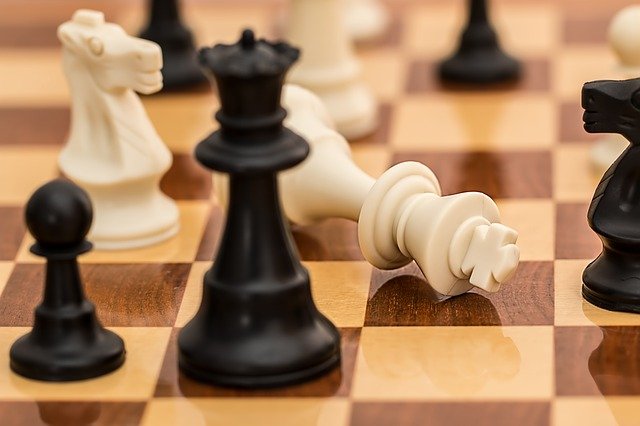By Tim Lambert
Dedicated to Lee and Sarah Spragg
People have been playing board games since civilization began. A board, dice, and counters were found in Ur in Iraq dating from 3,000 BC.
Egyptians also played a board game called Senet. The board was divided into squares with counters. You threw sticks rather than dice. The Romans also played board games. They played a game called the twelve-line game, which was similar to modern backgammon.
Rich Saxons played games like chess. In the Middle Ages, wealthy people also played board games. We are not certain where or when chess was invented. It was probably invented in India in the 6th or 7th century AD or possibly earlier. At any rate, by the 10th century, it was being played in Europe.
Games similar to draughts were played by the ancient Egyptians, Greeks, and Romans. The Arabs played a similar game, and by about 1100, a form of draughts was being played in France. In the USA, draughts is called checkers.
The Vikings played a board game called hnefatafl. (It means the king’s table). In some versions, one player used 8 pieces to protect the king while the other player used 16 pieces. In other versions, the players had 12 pieces and 24 pieces. The size of the board varied.
In Tudor Times the rich also played board games like chess and backgammon (a backgammon set was found on the wreck of the Mary Rose. It is the same as a modern one). Poor people often played nine men’s morris. The Tudors also played draughts and fox and geese. In the 17th century, people still played board games like chess, draughts, backgammon, and fox and geese.
Traditional games remained popular in the 18th Century. These included games such as chess, draughts, and backgammon. Dominoes were also played.
Then, in 1759, a man named John Jeffries invented an entirely new board game called A Journey Through Europe or The Play of Geography, in which players race across a map of Europe. The first international chess tournament was held in London in 1851.
Many new board games were introduced in the 19th and 20th centuries. Ludo was originally an Indian game. It came to Britain c. 1880. Snakes and Ladders was introduced in Britain in 1892. Steeplechase was introduced in 1895. Monopoly was introduced in 1935. It was followed by Cluedo in 1949 and Trivial Pursuit in 1982. Meanwhile, in the 20th century, Chinese games like Go and Mah Jong became popular in the West.
With the invention of the internet, playing board games online like Scrabble and nine men’s morris became popular.
In Britain, 11 April is National Board Game Day.

Last revised 2025